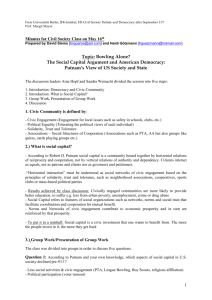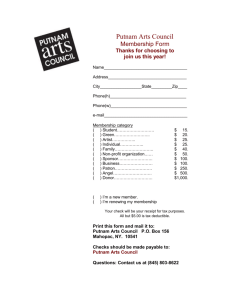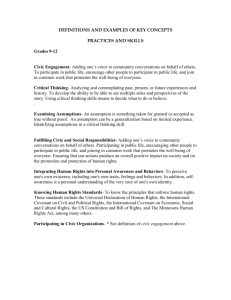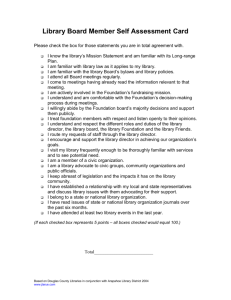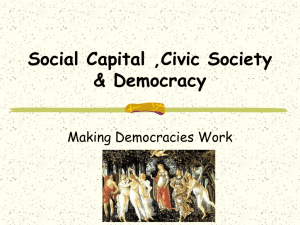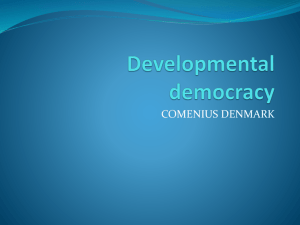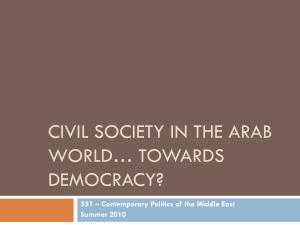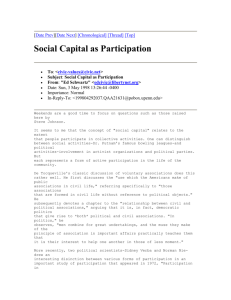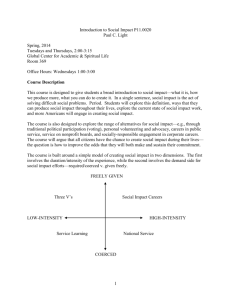Behavioralism
advertisement
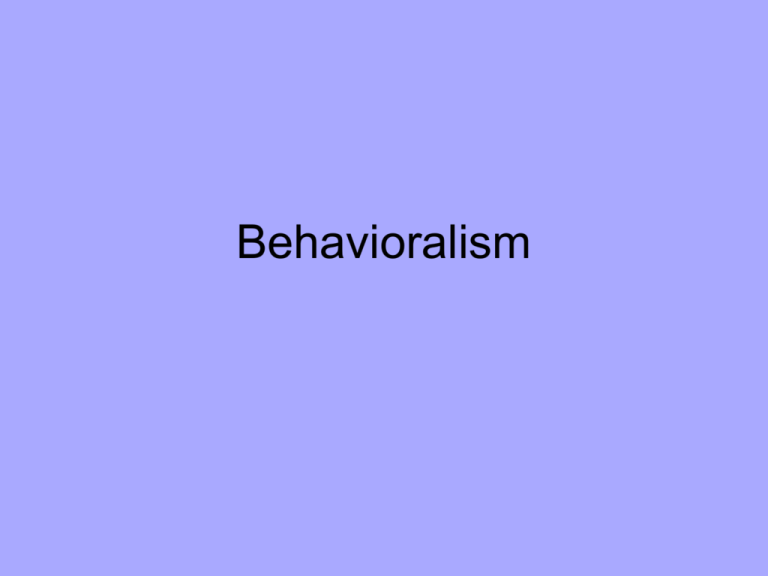
Behavioralism Behavioralism-Different Approaches. 1. Works based on the collection of empirical data from mass public opinion surveys. The American Voter (1964), The Civic Culture (1963). 2. Works based on economic reasoning that provide models to understand empirical political data. An Economic Theory of Democracy (1957). 3. Works inspired on sociological approaches: a. On aggregate data and class-based analysis. Political Man (1963) b. On grassroots micro-sociological analysis. Who Governs? (1961) c. On System Theory (Easton) 2. Works based on economic reasoning. • Anthony Downs, An Economic Theory of Democracy (1957). • Method: economic approach, which assumed individuals are rational • Rational behavior was understood as directed by goals, based on selfinterest, and, in Downs’ analysis, related to government selection. • Foundation of the RATIONAL CHOICE approach (today hegemonic). “An Economic Theory of Political Action in a Democracy.” • Economic theory has not dealt satisfactorily with the concept of Government. • Government was assumed to maximize social welfare, but ... “what reason is there to believe that the men who run the government would be motivated to maximize it?” (136) • Individual interests do not necessarily coincide with social interests. • Instead, “governors are led to act by their own selfish motives.” (136) A Democracy is a political system in which: 1. 2. 3. 4. 5. All adults are allowed to vote. Every adult gets one vote. Existence of at least two political parties. Periodical elections. A single party/coalition is chosen in each election. 6. The party that gets the majority of votes wins. 7. Losers don’t prevent winners from taking office. 8. Winners don’t attempt to wipe out the losers. Axioms • Political parties are teams whose leaders seek office to enjoy benefits. • The party that wins controls the government. • Government’s economic powers are unlimited, but it cannot restrict the opposition’s freedom. • All agents are Rational Main Hypothesis: • “Political parties in a democracy formulate policy strictly as a means of gaining votes.” • Parties’ social function—to carry out policies while in government—“is accomplished as a by-product of their private motive—which is to attain the income, power, and prestige of being in office.” (137) Other Hypotheses: • Voters vote for the candidate/s they think will give them more benefits. • Government decisions are based on marginal expenditure, that is programs are expanded until the vote gain from each dollar spent equaled the loss of votes resulting from increased taxes. • All parties must find out what the voters want and compete to do it better. • Parties must frame their discourse loosely so as to attract as many voters as possible. Problem: imperfect knowledge fosters... Persuasion (exposure to a “biased selection of facts”) Specialists/Gvt. Representatives. Ideologies (help voters to rapidly identify differences between parties). Parties then invent ideologies to attract voters Rational Ignorance (may lead to apathy, which is very rational considering the costs of information). Downs anticipates the problem of the “free rider”: • In a democracy policies benefit all citizens evenly. Thus, my own participation do not increase my gains, unless my vote is going to decide the election. • So, apathy and withdrawal from political participation are rational. Different Party Systems... • Depends on the statistical distribution of the electorate. – If the curve is normal, it produces a two-party system, with parties quite alike – If the electorate is polarized, there will be a two-party system with increasing differences between the parties—each party gains more votes the more differences it poses to the opposition... Ultimately this leads to CHAOS (continuous dramatic changes in policy) – A multimodal distribution produces a multiparty system In analyses such as Downs’, once the premises are accepted, there is no way of avoiding the conclusions. Typical Rational Choice Dilemmas (Hardin 1968) • Cold War: “dilemma of steadily increasing military power and steadily decreasing national security.” (1243) • “How can I win the game of tick-tack-toe? It is well known that I cannot” if I assume that my opponent knows the game. • “Maximizing population does not maximize goods.” • The “tragedy of the Commons”: in a pasture open to all, each herdsman will add as many animals as possible, until the grass disappears. So, individual freedom contradicts the common good. Along the tradition of the Civic Culture: Putnam’s examination of the American society. • Robert Putnam’s seminal work: Making Democracy Work (1993), a study of civic culture in Italy. • Main Problem: “What are the conditions for creating strong, responsive, effective representative institutions?” (p.6) • Main influences: – De Tocqueville’s emphasis on associations – Almond and Verba’s concerns on political culture and methods (IMPRESSIVE fieldwork done for 30 years). – Neo-Institutionalisms Core Thesis: • What lies at the core of sucessful and enduring representative institutions is civic associations. • People’s engagement with civic associations (i.e. Choral societies) generates Social Capital (TRUST). • Abundance and lack of social capital is what characterizes the Northern and Southern areas of Italy respectively. Putnam: • “Networks of civic engagement, like the neighborhood associations, choral societies, cooperatives, sports clubs, mass-based parties... Represent intense horizontal interaction [and] are an essential form of social capital.” (173) In Bowling Alone, • Putnam described the loss of social capital in the American society in the last three decades. – Use of surveys (= Almond and Verba) – Questions on trust and participation • (i.e. “How many people do you think you can trust in case you have a problem?”) In “Bowling Together,” • Putnam evaluates the effects of September 11 on American values and civic habits. • Surveys (n=500) • Mid-October/mid-November 2001 • Comparison between 2001 and 2000 • Putnam finds CHANGE. Results • Increasing trust in both Federal and local government, and in the police. • Increase in people’s interest in politics and people’s will to get involved with the community. • Americans trust each other more, too, even accross ethnic groups and classes. • These trends are more significant among younger Americans (less than 35). Civic solidarity Social Capital • “Civic solidarity is what Albert Hirschman called a ‘moral resource’— distinctive in that, unlike a material resource, it increases with use and diminishes with use.” But... • Trust in Arab Americans decreased 10%. • Increasing opposition to immigrant rights. • “Attitudes have shifted more than behavior”... “Will behavior follow attitudes?” Conclusions: • “In the aftermath of September’s tragedy, a window of opportunity has opened for a sort of civic renewal that occurs only once or twice a century.” • Changes in attitudes and images are important, but alone “do not create turning points in a nation’s history. That requires institutionalized change.” – Challenge Problems: • What about PERVERSE forms of social capital and trust, such as those we can see in organizations like the KKK, the SS, and mafia groups? • Putnam’s view of political life is essentially a-political. Questions: • Aren’t these depoliticizing views of politics? • Doesn’t the political vanish?
